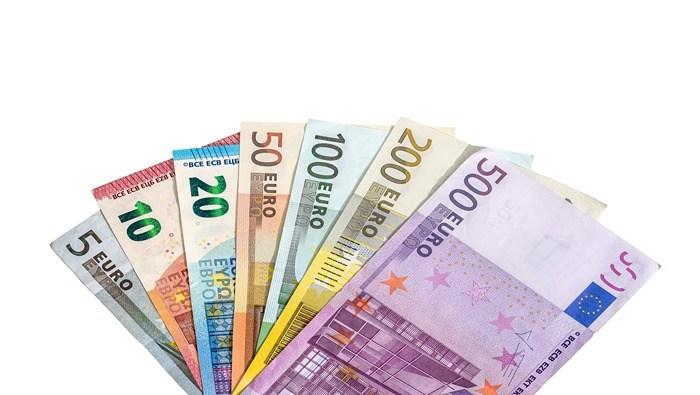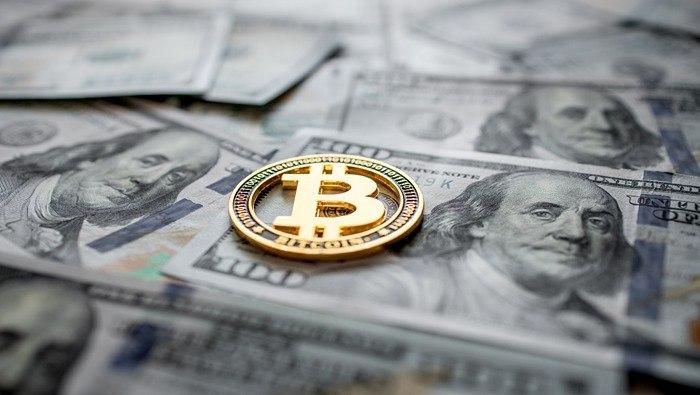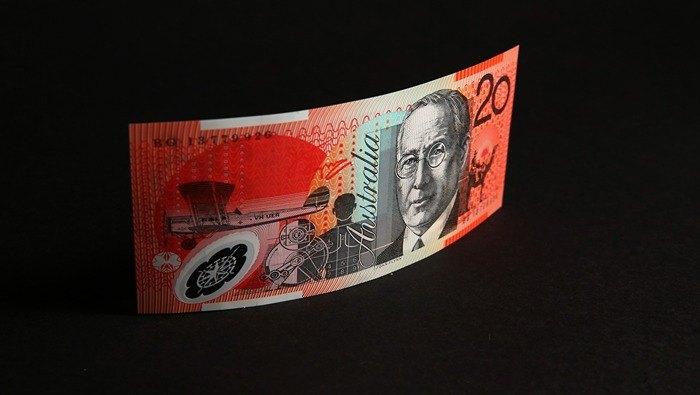2024-01-06 20:00
Market Recap: Hopes of BoJ Hikes Saw Yen Falls Reverse The Yen garnered year-end support from hopes that the Bank of Japan would raise interest rates, perhaps while the Federal Reserve was cutting its own. The currency’s fortunes in 2024 will depend on how these two prospects play out. It’s distinctly possible that both may be dashed, but the former looks more at risk. The Japanese Yen has long suffered from the Bank of Japan’s position as a policy outlier. For decades the central bank has tried to stimulate domestic demand, and a bit more inflation, via the loosest monetary settings in the developed world. And it met with mixed success. However, the recent global inflationary wave didn’t leave Japan entirely unscathed. So, the Yen benefited from market hopes that even the BoJ might be tempted to join in the world trend toward higher interest rates. Back in July it went as far as tweaking its Yield Curve Control scheme, allowing ten-year local government yields to rise more strongly but still effectively capping them at 1%. Ever since the foreign exchange market has been wondering whether actual interest rate rises might follow, and this process has tended to support the Yen, even as the United States Federal Reserve looks as if it may have reached the top of its own rate-hike cycle. However, the BoJ has kept its base rate at minus 0.1% through 2023, and there seems little sign that it will be changing that policy in the first quarter of the New Year. Key Drivers: Listen to the Fed, Watch Japanese Inflation The ‘USD’ side of USD/JPY is likely to be where the real action is in the first three months of 2024. Markets are increasingly certain that US interest rates have peaked, and that the coming year will see reductions, possibly quite heavy ones. This thesis will tend to weaken the Dollar across the board, especially given that other major central banks are still intent on keeping their borrowing costs on hold at generational highs. Indeed, it’s far from certain that some have finished hiking, perhaps including the Bank of England. So, trading the Yen is likely to still mean in practice watching the Fed. For as long as those market hopes are realistic, the Dollar is likely to drift lower. As for the Bank of Japan, it's highly unlikely to make any policy shift unless there are clear signs of domestically driven inflation. As there are few of these at present and it will surely take more than a single quarter’s worth to prompt a BoJ move anyway. Yen traders should focus on Fed speakers as 2024 gets under way, and also on the monthly Japanese inflation data, with particular focus on domestically driven price rises. What About the Carry Trade? Given decades of miserable Japanese onshore returns, the Yen has been a favored carry trade currency, sold off to buy other units that offer better returns. A process that global rate rises have only accelerated. While lower US rates will likely see some unwinding of the popular Yen-into-Dollars carry, the bottom line is that those looking for yield are still likely to shun the Japanese currency. https://www.dailyfx.com/news/forex-japanese-yen-q1-fundamental-forecast-yen-likely-to-gain-but-thanks-to-fed-not-boj-20240106.html

2024-01-06 15:00
The weekly chart for 2023 gives us perhaps the clearest picture of where the oil market stands heading into the new year. A broad trading band between $70 and $83/barrel contained market action for the vast majority of the year, and was traded back into fairly rapidly whenever it was broken, with only an eight-week upside breakout between August and October threatening the pattern. Another foray to the downside seems to have been checked and there seems little reason to think that the range base would be abandoned for long even if it should give way in the early sessions of 2024. WTI Crude Oil Weekly Chart Source: TradingView, Prepared by David Cottle The daily chart offers a little more detail, showing prices stuck between the fifth Fibonacci retracement of their rise up to those September peaks from the lows of June 28 and complete erasure of the entire rise. That retracement level comes in at $73.07, with complete retracement still acting as support at $67.10. Still, for all that prices seem to be stabilizing, bulls are going into 2024 with plenty of work to do. WTI remains very much within the downtrend channel established on September 28 and won’t break out of it until it can top the $74.50 mark. The WTI market has recovered quite well from the oversold levels seen back in early December, and this more relaxed picture suggests that there could be more room for gains. The technical picture overall chimes with the fundamentals to suggest that crude heads into 2024 holding above its recent lows but most unlikely to challenge the old year’s peaks without a major shift in market dynamics. WTI Crude Oil Daily Chart Source: TradingView, Prepared by David Cottle https://www.dailyfx.com/news/crude-oil-q1-technical-forecast-broad-trading-range-looks-set-to-stick-20240106.html

2024-01-06 09:00
Euro Poised for a Mixed First Quarter The euro is likely to exhibit mixed fortunes in Q1 of 2024 as the currency appears on track to register gains against the US dollar but could lose out against sterling and particularly against the yen. Economic data provides green shoots of hope into 2024 if the EU can avoid a recession like it has during 2023, albeit only just. Does the Recent Lift in EU Data Suggest the Worst Is Behind Us? Sentiment and hard data show early signs of progress after rising off their respective lows. One of the most shocking data prints on the continent in 2023 was the German manufacturing PMI numbers which lead the rest of Europe on the way down. The data print is watched closely as Germany is the economic powerhouse of Europe so if the German economy is struggling, then it is likely the rest of the EU is struggling too. However, German manufacturing PMI data – while still deep in contraction – has shown signs of improvement, recovering from a low of 38.8. Other surveys like the ZEW economic sentiment index measures experts’ opinions on the direction of the European economy over the next six months and has also risen off its pessimistic low back in September 2023. Furthermore, the economic surprise index has also lifted off basement levels, suggesting the EU may enjoy a period of relative stability if it can avoid a recession. The December 2023 ECB staff forecasts point to a 0.8% GDP growth rate in 2024, however, we could still have two successive quarters of negative growth in that time. Another possibility is that the EU is already in recession as we await Q4 GDP results after a 0.1% contraction in Q3. Graph Showing the Recent Uptick in EU Data Alongside EUR/USD (Blue) Source: Refinitiv, Prepared by Richard Snow Smart Money Reveals Slight Euro Optimism Ahead of Q1 2024 According to the latest Commitment of Traders (CoT) report from the Commodity Futures Trading Commission (CFTC), hedge funds and other large financial institutions hardly reduced their euro longs over 2H 2023 while recent shorts have been pared back. The ascending histograms reveal the rising optimism around the euro as prospects of deep rate cuts in the US continue to get priced in by the market, propping up EUR/USD prospects. Interested in learning how retail positioning can offer clues about EUR/USD’s directional bias? Our sentiment guide has all the answers you are looking for. Request a free copy now! Long and Short Euro Positions According to CoT Report 15/12/2023 Source: Refinitiv, Prepared by Richard Snow At the final central bank meeting for 2023, ECB President Christine Lagarde presented a much sterner front on monetary policy than her counterpart, and Fed Chair, Jerome Powell. Lagarde mentioned that rate cuts were not even discussed and that rates may plateau in the interim, a sentiment echoed by the ECB’s Muller and Villeroy shortly after the ECB meeting. The latest ECB forecasts suggest that inflation is only likely to return to 2% after 2025 and the governing council anticipates an uptick in inflation in the short term – potentially providing a tailwind for the euro in Q1. Looking for new strategies for 2024? Explore the top trading ideas developed by DailyFX's team of experts Risks Stack up: Inflation, Growth, and Interest Rate Expectations Markets are expecting the ECB to cut interest rates at a similar pace and magnitude as the Fed in 2024, and should this materialise, the euro would be set to weaken across the board. Currently the market expects 150 basis points of cuts in 2024. Economic growth has really been at the heart of Europe’s problems with China’s economic woes not helping the situation. In the event the economic situation in Europe deteriorates rapidly, the ECB may have to institute those much-anticipated rate cuts instead of enjoying the ‘plateau’ where rates are expected to remain at elevated levels for some time. Implied Basis Point (bps) Cuts Derived from Overnight Interest Swaps Source: Refinitiv, Prepared by Richard Snow Powell acknowledged the degree to which tight financial conditions has weighed on price pressures, stating that this will continue to weigh on activity. It is very much a case of who will blink first and if you look at the data, the EU is more likely to succumb to economic headwinds than the US. This could see the euro hand back gains achieved towards the end of 2023. Another concern is inflation where the ECB anticipate an uptick over the short term and the Fed stress that they cannot rule out another hike in response to lingering price pressures, although by their own admission, it is likely that the US is near or at peak rates. https://www.dailyfx.com/news/forex-euro-q1-fundamental-forecast-euro-reveals-green-shoots-of-optimism-20240106.html

2024-01-06 02:00
Bitcoin Technical Outlook Bitcoin had a strong performance this year, rallying from an opening level of around $16.6k to a recent high of $44.7k with little in the way of notable pullbacks along the way. The strong bottoming-out pattern between November 2022 and January 2023 prompted a wave of higher lows and higher highs throughout the year, culminating in an 80% rally between early September and early December. The next target on the weekly chart is just above $48k, the end of March swing high. The current strength of Bitcoin can be seen in the three simple moving averages which are currently situated between $29k and $32.3k. The 50-day SMA is also looking to create a golden cross by breaking above the 200-dsma. Weekly support at $40k and just below $38k. Bitcoin Weekly Price Chart Source: TradingView, Prepared by Nick Cawley Improve your cryptocurrency trading skills today with our comprehensive guide packed with essential insights and effective strategies for navigating the world of digital tokens. Get a free copy now! The daily Bitcoin chart remains positive although a short-term pullback cannot be discounted. The 50-/200-dsma produced a golden cross on October 29th ($34.5k) and this allowed BTC to rally to a multi-month high of $44.7k on December 8th. The chart shows a series of higher lows and higher highs since mid-September and a break below $38k would be needed to negate this and turn the chart neutral. The 20-dsma has acted as support during the recent rally but is now being tested. A confirmed break below here could see Bitcoin trade down to horizontal support a fraction below $38k. Bitcoin Daily Price Chart Source: TradingView, Prepared by Nick Cawley https://www.dailyfx.com/news/bitcoin-q1-technical-outlook-chart-signals-remain-constructive-20240106.html

2024-01-05 21:00
This article is specifically dedicated to analyzing the fundamental prospects for the Australian dollar. For insights into the Aussie’s technical outlook, request the comprehensive Q1 forecast without delay! Optimistic Doves Must Proceed with Caution The Reserve Bank of Australia (RBA) ended 2023 by deciding not to raise interest rates for a second consecutive time although the possibility was not ruled out. Members cited disinflation both locally and globally as well as weakness appearing in the labour market. The graphic below illustrates the progress made through restrictive monetary policy measures to reduce inflationary pressures (yellow). While there has been significant improvement, the RBA will have a tough task to juggle the pace of easing as to avoid a resumption of higher prices, thus undoing much of their prior advancements. It is important to note that current headline inflation (5.4%) is far off from the RBA’s target level of 2-3% range with forecasts implying a move back into the desired range in late 2025. Australian CPI Vs Unemployment Rate Vs Interest Rate Source: Refinitiv, Prepared by Warren Venketas Current money market pricing below suggests that markets expect no additional rate hikes from the RBA in 2024 but with inflation at elevated levels, any external shock may slow this last bid to quell inflation and potentially ‘hawkishly’ reprice rate projections. Data dependency as with many other global central banks will be key for the RBA and consequently forward guidance. If market expectations are to be accurate, both the RBA and the Federal Reserve should have policy rates around similar levels by December 2024 with the Fed scheduled to cut by roughly 143bps versus the RBA’s 46bps. This substantial decline by the Fed could support the Australian dollar over this period; however, with rate cuts unlikely to begin in Q1 of 2024, the pair will be more sensitive to incoming data that could give more colour to the current fundamental backdrop. Reserve Bank of Australia (RBA) Interest Rate Probabilities 2024 Source: Refinitiv, Prepared by Warren Venketas Commodities: USD & China From a commodity perspective, the latter part of 2023 has proven to be encouraging for as reflected by the commodity price index (refer to graphic below). While growth has been limited, Pavlovian response after the Fed’s Dovish December announcement has weakened the US dollar and pro-growth currencies like the AUD have benefitted tremendously. The question going forward is “how long will this last”? The Fed and RBA are yet to pivot but markets have already pre-empted this move leaving incoming data that much more important. Another key component to the commodity landscape has been China and its close ties with Australian exports. China has not exited from its COVID-19 limitations as many predicted, leaving disinflation, slow growth and grim production (as measures by PMI data) a major concern for the Chinese government. In response, the PBoC introduced stimulus measures to the economy by way of liquidity injections and an accommodative monetary policy stance. Should these channels achieve the required outcome, Australian commodity prices could continue to rise and maintain upside impetus for the Australian dollar. Australian Commodity Price Index Vs Australian Dollar Source: Refinitiv, Prepared by Warren Venketas In summary, AUD/USD could be hampered by the overexuberance of market participants in terms of a turnaround in Fed rhetoric within the first quarter. But as mentioned above, every additional layer of new data focusing on inflation and labor will give more clarity to AUD traders. https://www.dailyfx.com/news/forex-australian-dollar-q1-fundamental-forecast-monetary-policy-will-take-center-stage-20240105.html

2024-01-05 15:30
This article is specifically dedicated to analyzing the technical outlook for the British pound. If you are interested in the currency’s fundamental prospects, request our brand-new Q1 forecast now! The technical outlook for GBP/USD in the months ahead is uncertain due to the ever-moving backdrop of US and UK interest rate expectations. The likely outcome is that GBP/USD moves slowly higher with a raft of US rate cuts already priced into the US dollar, while Sterling has further to go to price in recent dovish rate expectations. The daily GBP/USD chart remains positive after turning higher at the start of October. The pair continue to make higher lows and higher highs and while this pattern persists then cable will continue to push back toward the mid-July high at 1.3143. Before this GBP/USD will have to battle through a couple of layers of horizontal resistance at 1.2667 and 1.2742 and the 23.6% Fibonacci retracement level at 1.2823. While the outlook for GBP/USD is mildly positive, the mid-July may be a tough target to reach in Q1 2024. GBP/USD Daily Price Chart Source: TradingView Curious to learn how retail positioning can shape the short-term trajectory of EUR/GBP? Our sentiment guide has all the relevant information you need. Grab a free copy now! EUR/GBP has been a range trader’s delight since mid-Q2 this year with the pair offering multiple opportunities to enter trades with limited downside. There were multiple touches on either side of 0.8500 that offered low-risk entry points, while the 0.8700 to 0.8750 area offered a reversal trade. The CCI indicator (bottom of the chart) also showed that overbought and oversold conditions highlighted potential trade set ups (sell overbought/buy oversold). Looking forward there seems little reason for this trading range to break. While this range won’t appeal to short-term traders, it does offer a fairly robust longer-term trade idea with recent history on its side. Near-term price action will be defined by the 50- and 200-day simple moving averages with a confirmed break above both opening up 0.8700. EUR/GBP Daily Chart Source: TradingView https://www.dailyfx.com/news/british-pound-q1-technical-outlooks-gbp-usd-and-eur-gbp-20240105.html
